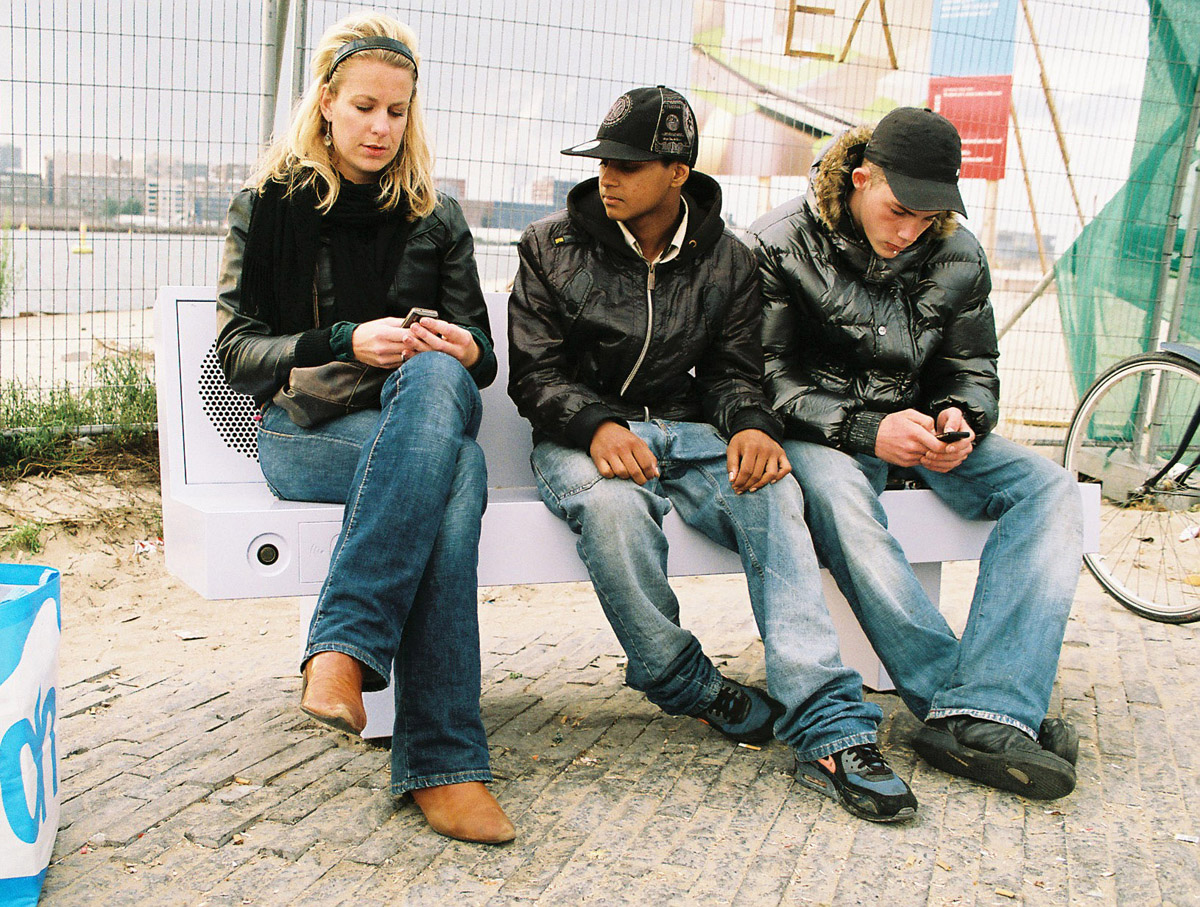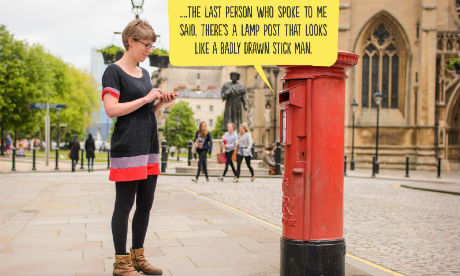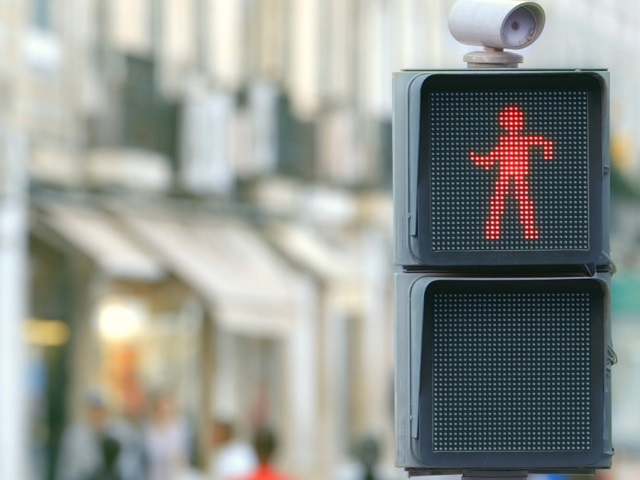At a time where technology aims to remove all the friction from our daily lives, guiding us to exactly where we want to be, Playable Cities aim to interrupt this utilitarian efficiency with a touch of creativity and ludic intervention. From Stockholm’s Piano Staircase to Lisbon’s dancing traffic signals, there is a global trend of introducing playfulness into cities.
The Playable Cities movement is a creative response to the highly functional and structured urban environment. A situation that the Smarter City movement threatens to exacerbate. It’s by no chance that films such as the 1920’s Metropolis or the more recent film, LEGO present cities as machines and their inhabitants as workers. People in cities are often completely absorbed in getting from one place to another. It’s not called rush hour because people are going for a stroll.
The ‘Smart Cities’ term has gained traction in academic, industry and policy debates. Whilst no single definition exists, it refers to technologies that make city infrastructures more efficient, improve quality of lives for citizens and address future challenges that cities face. Examples of ‘Smart Cities’ include towns built from scratch like New Songdo in South Korea and Masdar in the United Arab Emirates. Although, there has been a recent move to retrofit existing cities to be made ‘smarter’, like the Amsterdam Smart City project or IBM’s collaboration with government of Rio de Janeiro on the Rio Operations Center.
Smart city advocates envisage a city with in-built sensors and rapid communication networks. Intelligent technologies will monitor various facets of the city, from energy consumption to traffic flow. This data will then be used to make improvements and live adjustments without the need for human intervention. In short, technology promises to provide city dwellers with convenience and efficiency and make our cities safer and more sustainable. However, with changes to the way we live as urbanites, comes changes to the way function as a society. So how in these highly structured, efficient cities, do we express ourselves as humans and encourage creativity and playfulness? One only has to go to the Google headquarters in Mountain View, California to see how they manage to be a world leading innovator worth $400 billion; and it’s though play.
But play is a child’s game I hear you say. It’s common to hear that adults aren't supposed to play, we have jobs, bills, we’re too busy to waste time. Our goal-oriented society has an entrenched bias against anything that isn’t productive. However, play doesn't operate on a metric of productivity, it's not about the end, but the experience. Yet in the lifelong search for happiness, the answer has always been in front of us, a study led by Princeton University researcher Alan Krueger found, of all the things on the planet, we're at our happiest when we're involved in engaging leisure activities.
In addition, scientific research has suggested that adults who play more show a larger orbitofrontal cortex. This part of the brain that among other things, helps you read social cues and make sound decisions. Both the philosopher Henri Lefebvre and historian Johan Huizinga argued that play was not simply an element within culture,it was at the origin of culture itself.
Play acts as a catalyst, it forces people out of their comfort zones and interact with complete strangers. A sense of playfulness and experimentation in urban spaces promotes creativity and innovation. The Playable Cities movement reflects a change in pattern of urban space, landmarks are no longer attention seeking buildings but participatory, engaging elements of our everyday lives; Landmarks 2.0 if you like.
Sure, swings at a bus stop won’t solve traffic congestion, but it will engage citizens to creatively shape their own environment and connect with their surroundings. Most importantly is injects hedonism to every utilitarian activities like the commute to work. This paper does not propose to suggest one is more superior to the other, in fact both concepts should operate in unison; Smarter Cities at the district and city level and Playful Cities at the fine grain street level.
I shall leave you on this point, in his book Play, psychiatrist Stewart Brown describes research where he interviewed some 6,000 people, from Nobel Prize winners to Texas murderers. The main thing that distinguished the killers from the productive members of society? Abusive childhoods and a lack of play.
Examples:
Boom bench – Equipped with Bluetooth speakers and a receiver, nearby users could send music to the bench. The bench was heavily used by local youth, who apparently begged the organizers to keep it there. The only complaint was that the sound could have been louder. |
| Street furniture becomes ghettoblaster and passer-by becomes DJ |
Hello Lamp Post! Allows you to interact with once innate objects and uncover the stories that other people leave behind.
Open Burble Members of the public come together to compose, assemble and control an immense rippling, glowing, bustling 'Burble' that sways in the evening sky, in response to the crowd interacting below. This massive structure, the form of which the public has themselves designed, exists at such a large scale that it is able to compete visually in an urban context with the skyscrapers that surround it.
The Fast Lane by Volkswagen why walk down stairs when you can slide down them! The auto giant has created a “Fast Lane” slide next to a flight of stairs at the Alexanderplatz subway station in Berlin, where commuters can save time by sliding down the giant orange slide.
Bogota’s traffic mimes - An initiative by the former Bogota mayor, Antanas Mockus, who hired mimes to tame the city’s unruly traffic. The mimes ridiculed bad behavior and handed out thumbs-up/thumbs-down cards to help people shame bad drivers.
Bus stops swings in London - Why sit bored at a bus stop when you can swing!!
Dancing traffic signals in Lisbon - The traditional crosswalk symbol was switched with a stick figure that imitates the dance moves of nearby people recorded in real time.
Basket Bin by The Wa - This traffic sign in Marseille has been transformed a into a basketball waste bin. Passers-by can dump their rubbish here, but have to produce a lay-up, dunk or try it for three points.
Utrecht 'Transfer Accelerator' - Another slide to a train station, but with a fancy name!
Bottle Bank Arcade - A recycling bin that encourages a higher rate of returns by rewarding bottle recyclers with musical notes and tons of fun.
Incredible Edible - There are now around 50 “incredible edible” towns and cities worldwide, which grow fruit and vegetables in public spaces for everyone to share.
Utrecht 'Transfer Accelerator' - Another slide to a train station, but with a fancy name!
Bottle Bank Arcade - A recycling bin that encourages a higher rate of returns by rewarding bottle recyclers with musical notes and tons of fun.
Incredible Edible - There are now around 50 “incredible edible” towns and cities worldwide, which grow fruit and vegetables in public spaces for everyone to share.
Article by Alex Frankcombe, Urbanist and thinker












Great article! Some really interesting and inspirational initiatives going on here. Keep up the good work
ReplyDeleteJoin this online communities to know all about the government initiatives on Citizen Community and Online Community for Smart Cities
ReplyDelete